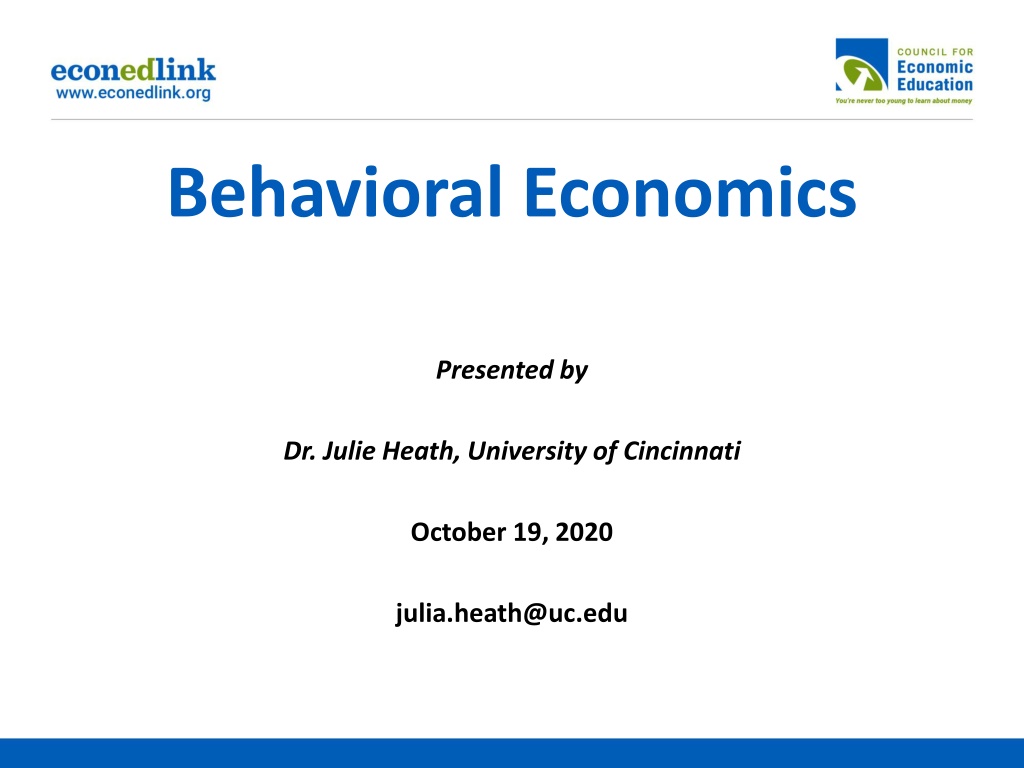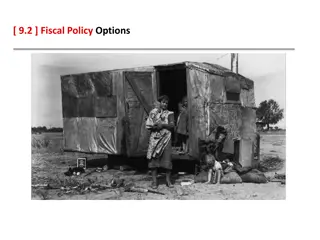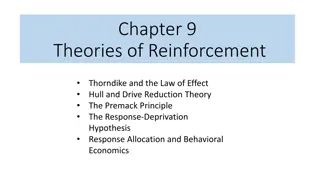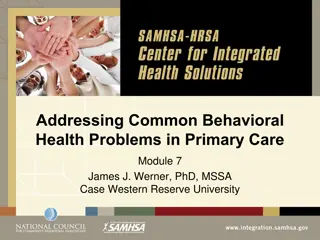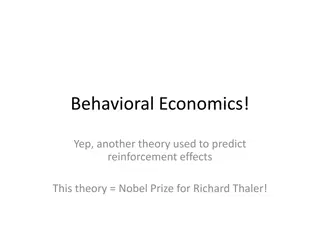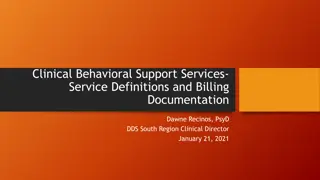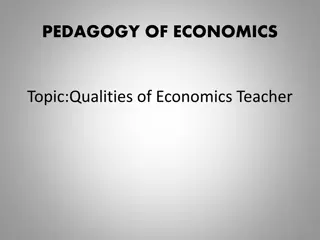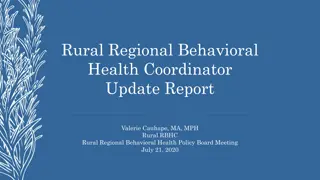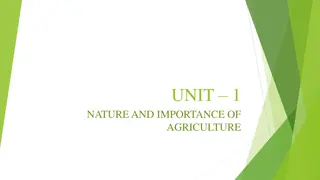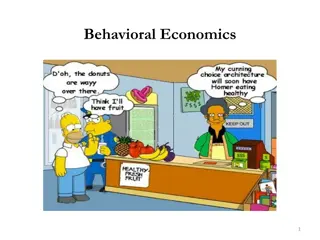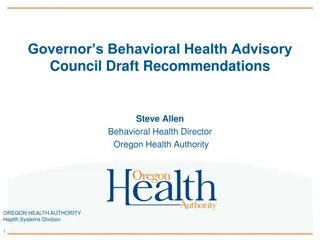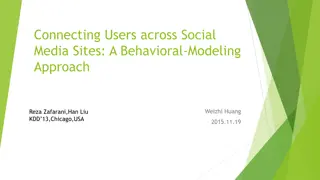Behavioral Economics
Delve into the realm of behavioral economics with insights from Dr. Julie Heath's seminar at the University of Cincinnati. Explore key concepts, experiments, and practical applications in this engaging session. Gain a deeper understanding of traditional versus behavioral economics, implications in decision-making, and how this field explains individual behavior with real-world examples and actionable takeaways.
Download Presentation

Please find below an Image/Link to download the presentation.
The content on the website is provided AS IS for your information and personal use only. It may not be sold, licensed, or shared on other websites without obtaining consent from the author.If you encounter any issues during the download, it is possible that the publisher has removed the file from their server.
You are allowed to download the files provided on this website for personal or commercial use, subject to the condition that they are used lawfully. All files are the property of their respective owners.
The content on the website is provided AS IS for your information and personal use only. It may not be sold, licensed, or shared on other websites without obtaining consent from the author.
E N D
Presentation Transcript
Behavioral Economics Presented by Dr. Julie Heath, University of Cincinnati October 19, 2020 julia.heath@uc.edu
EconEdLink Membership You can now access CEE s professional development webinars directly on EconEdLink.org! To receive these new professional development benefits, become an EconEdLink member. As a member, you will now be able to: Automatically receive a professional development certificate via e-mail within 24 hours after viewing any webinar for a minimum of 45 minutes Register for upcoming webinars with a simple one-click process Easily download presentations, lesson plan materials and activities for each webinar Search and view all webinars at your convenience Save webinars to your EconEdLink dashboard for easy access to the event You may access our new Professional Development page here
Professional Development Certificate To earn your professional development certificate for this webinar, you must: Watch a minimum of 45-minutes and you will automatically receive a professional development certificate via e-mail within 24 hours. Accessing resources: You can now easily download presentations, lesson plan materials, and activities for each webinar from EconEdLink.org/professional-development/
Agenda Warm-up Traditional vs. Behavioral Economics Video Experiment #1-- Extensions Experiment #2-- Extensions Experiment #3-- Extensions
Objectives Understand the differences between traditional and behavior economics o Assumptions o Implications Analyze situations where behavioral economics is more accurate than traditional in explaining behavior
National Standards--Economics Name: Decision-making Standard: 2 Effective decision making requires comparing the additional costs of alternatives with the additional benefits. Many choices involve doing a little more or a little less of something: few choices are all or nothing decisions.
Students learn about behavioral economics and how it can be used to understand individual behavior. Time: 45-60 minutes Materials: YouTube video Counting the Passes Activity 1/Experiment #1 Experiment #2 Experiment #3 Experiment Administration/Recording Sheet Exit Ticket
Econs Weigh costs and benefits equally Only weigh costs and benefits Not influenced by their current situation Appropriately discount costs and benefits equally that occur in the future Not subject to biases
Humans Make decisions on past experiences or quick judgements Subject to influences of social networks Tend to weigh losses greater than gains Tend to bias to the default or to things they already have May have self-control problems and discount the future too much May make decisions based on fairness or for other emotional factors May have limited ability to know costs/benefits
Tell students that youre going to refer to people who behave in accordance with traditional economics as Econs and people who behave less like traditional economics would predict as Humans Tell students that before you go any further in the lesson, you want them to watch a video and follow the instructions.
Ask how many saw the gorilla Tell students that this illustrates one of the big differences between traditional economics (being an Econ) and behavioral economics (being a Human) o Traditional economics Traditional economics assumes that people are Econs they focus on the information in front of them (the instructions) and do not consider other information around them (the gorilla)
o Behavioral economics Behavioral economics, however, broadens our perspective and recognizes that people can also pay attention to other, peripheral things
Rational Smart Ex. Smoking (benefits > costs, so rational) Rational (Econ): Individual is immensely intelligent, emotional-less, can weigh costs and benefits and is never (ever) wrong.
Divide class into groups of 5 (at least) members each Two members of each group will administer 3 experiments to others in the group Give the two administrators in each group copies of Activity 1 and Activity 2, go over the instructions and answer any questions Separate the groups so that they cannot overhear others experiments Give students approx. 10 minutes to do experiments
Give each group another 10 minutes or so to discuss the results of the experiments: What are the correct answers? What did each experiment show? Have a representative for each group report out their answers to the entire class
Experiment #1 Experiment #1 Most people take longer to finish the second set of words and are likely to be more inaccurate. Why? Our mind reads the word and wants to report the word, not the color. The mind quickly grabs the first piece of information and uses that information to form responses to other questions (remember the gorilla?)
Experiment #2 Experiment #2: Correct answer is A This is an example of the conjunction fallacy, where people think an option that has more specificity is more likely than one that is more general. To demonstrate: assume there are 100 Lindas. Ask students to estimate how many of them are bankers (any # less than 100 is fine). Then ask them to estimate how many are bankers AND active in the women s movement (the # should be less than the first number).
Experiment #2, contd Point out that we tend to link pieces of information together and form conclusions based on that, even when it is not logical to do so.
Experiment #3: Experiment #3: The correct answer is 5 cents Tell students that a common answer is 10 cents. Tell them this is another example of how our minds grab a piece of information to answer a question. Seeing $1.10 provides two numbers to their minds: $1 and 10 cents. This leads to us anchoring on 10 cents, even though it is not the right answer.
Tell students that all of these experiments (and the gorilla) demonstrate how our minds do not always work in rational, logical ways and that we sometimes come to conclusions that are incorrect. Behavioral economics studies how other factors can influence our decisions.
Give each student a slip of paper with a number between 1 and 10 on it. Tell them that you are considering giving them extra credit points equal to the number that s on their slip of paper. Ask them to raise their hands if they are happy with this extra credit. (Most will be happy, although some of the students with 1s or 2s might not be happy)
Ask a few students to announce to the class how many extra points they will be getting by reading the number on their slip of paper. Continue doing this until it s obvious that some students got a lot more points than others. Ask, again, for students to raise their hands if they are happy with their extra credit.
There should be fewer students who raise their hands this time. Ask a few of the students who did not raise their hands why they are no longer happy. (They will probably say something about the process not being fair). Ask why they think it is unfair. Point out that they all should have been happy because they got something (without giving up anything) that was of value to them (benefits > costs)
The fact that some of them are no longer happy means that the Econs way of looking at things is not always correct. The Humans Humans way of looking at things is that fairness (and other principles) matter to us and can affect us.
CEE Affiliates https://www.councilforeconed.org/resources/local-affiliates/
